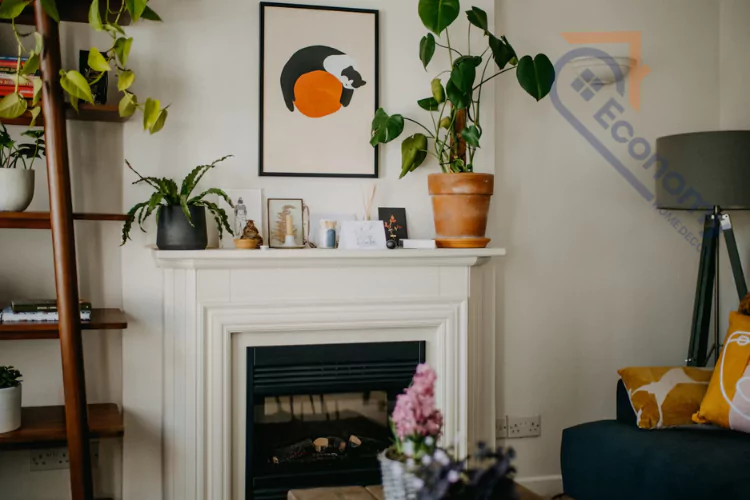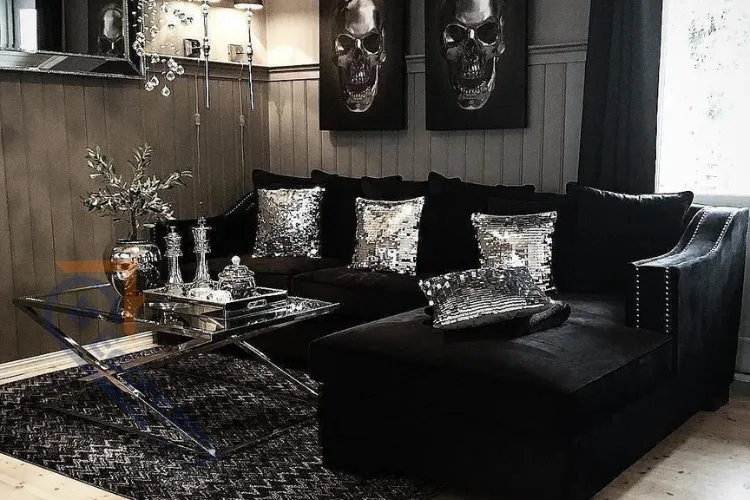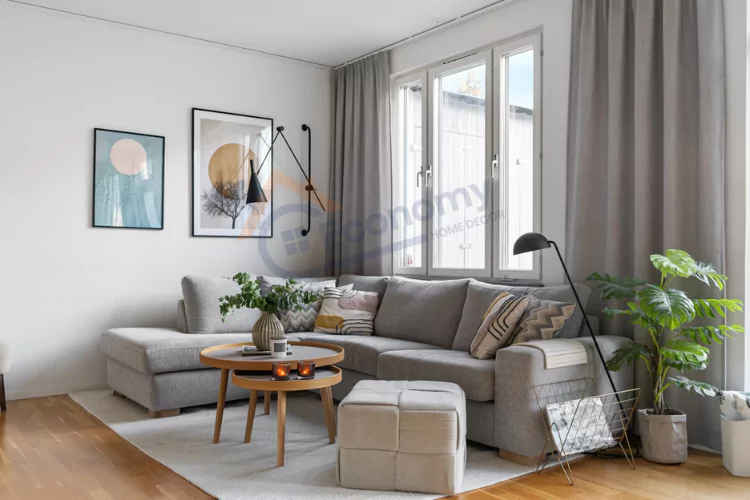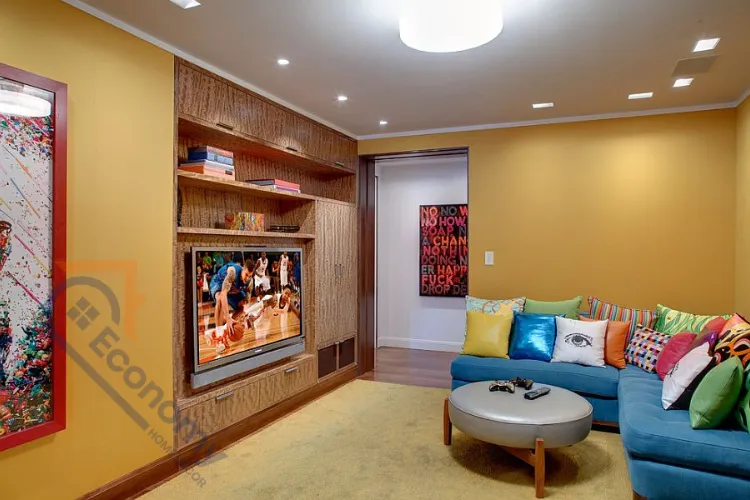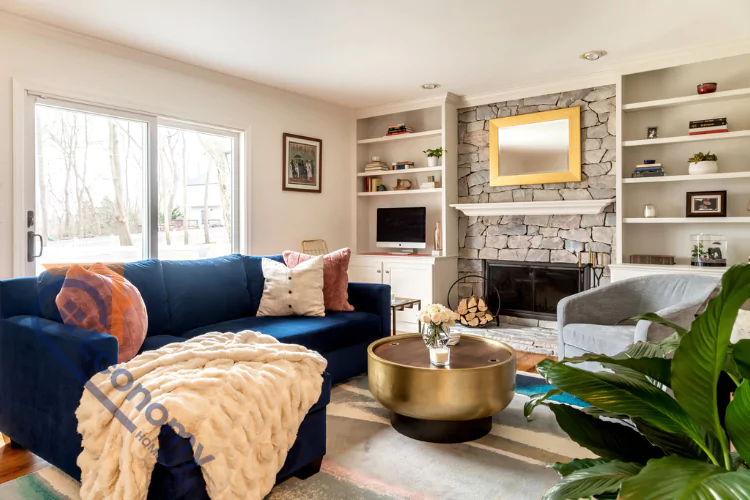Creating a beautiful and cohesive room design can feel overwhelming, especially when you’re trying to figure out which walls deserve special attention. Whether you’re moving into a new home or refreshing your current space, understanding how to strategically highlight certain walls can transform your room from ordinary to extraordinary. The key lies in knowing which walls to emphasize and how to do it effectively.
When it comes to interior design, not every wall needs the same level of decoration. In fact, overdoing it can make your space feel cluttered and chaotic. The art of room decoration involves creating focal points that draw the eye and establish visual hierarchy throughout your space. By thoughtfully selecting which walls to highlight, you can create depth, interest, and personality in any room.
This comprehensive guide will walk you through everything you need to know about selecting and decorating accent walls, from understanding the fundamentals of wall highlighting to practical tips for different room types. You’ll discover how to make informed decisions that enhance your space’s natural beauty while reflecting your personal style.
Understanding the Basics of Wall Highlighting
Wall highlighting is the practice of making one or more walls stand out from the rest through various decorative techniques. This could involve using different paint colors, textures, materials, or decorative elements to create visual interest and establish focal points within your room. The goal is to guide the eye naturally through the space while creating a sense of balance and harmony.
The concept of accent walls has been popular in interior design for decades, but modern approaches are more nuanced and sophisticated. Rather than simply painting one wall a bold color, today’s designers consider factors like natural light, room function, architectural features, and overall design aesthetic when deciding which walls to highlight.
Understanding your room’s natural flow and how people move through the space is crucial. The walls you choose to highlight should enhance this flow rather than disrupt it. Additionally, consider how the room will be used and what activities will take place there, as this can influence which walls would benefit most from special attention.
How Many Walls in a Room Should Be Decorated
One of the most common questions homeowners ask is how many walls in a room should be decorated. The answer isn’t one-size-fits-all, as it depends on several factors including room size, purpose, and your personal design preferences. However, there are some general guidelines that can help you make the right decision for your space.
As a general rule, highlighting one to two walls in a standard room creates the most pleasing visual effect. This approach allows you to create interest without overwhelming the space. In smaller rooms, focusing on just one accent wall can make the space feel larger and more open, while larger rooms might benefit from two complementary highlighted walls.
The key is to maintain balance and avoid creating visual competition between walls. When you highlight too many walls, the effect becomes diluted, and your room can feel busy or chaotic. Conversely, if you don’t highlight any walls, your space might feel flat and lacking in personality. The sweet spot typically lies in the middle, where you create just enough visual interest to engage the eye without overwhelming the senses.
Identifying Your Room’s Natural Focal Points
Every room has natural focal points that can guide your wall highlighting decisions. These are areas that naturally draw attention due to architectural features, lighting, or the room’s layout. Common natural focal points include fireplaces, large windows, built-in shelving, or the wall behind your bed in a bedroom.
When identifying these focal points, walk around your room and notice where your eye naturally goes. These spots often make excellent candidates for wall highlighting because they’re already drawing attention. By enhancing these areas with decorative treatments, you’re working with your room’s natural tendencies rather than against them.
Consider the room’s primary function and how furniture will be arranged. In a living room, the wall behind the sofa or the one containing the entertainment center might be natural focal points. In a dining room, the wall behind the dining table or a wall with a beautiful chandelier could serve as the perfect backdrop for highlighting.
The Rule of Thirds in Room Design
The rule of thirds is a fundamental design principle that can help you determine which walls to highlight. This concept divides your space into imaginary thirds, both horizontally and vertically, and suggests placing focal points along these lines or at their intersections. When applied to wall highlighting, this rule can help you create more dynamic and visually pleasing arrangements.
In practice, this might mean highlighting the wall that occupies the central third of your room’s primary view, or selecting walls that align with the natural thirds of your space. This approach helps create balance and prevents your highlighted walls from feeling randomly placed or disconnected from the room’s overall composition.
The rule of thirds also applies to the amount of visual weight you give to different walls. If you have one heavily decorated wall, consider how it balances with the other walls in the room. The goal is to create a sense of equilibrium that feels natural and comfortable to the eye.
Choosing the Right Wall for Maximum Impact
Selecting the right wall to highlight requires careful consideration of several factors. The most impactful choice is often the wall that’s most visible when you enter the room. This creates an immediate focal point that welcomes visitors and sets the tone for the entire space.
Consider walls that serve as backdrops for key furniture pieces. In a bedroom, the wall behind the headboard is a classic choice because it frames the bed and creates a sense of intimacy. In a living room, the wall behind the sofa can anchor the seating area and provide a beautiful backdrop for the room’s main gathering space.
Think about the room’s lighting patterns throughout the day. Walls that receive natural light can showcase colors and textures beautifully, while walls in darker areas might benefit from lighter treatments or strategic accent lighting. The interplay between your highlighted wall and the room’s lighting can dramatically affect the overall atmosphere.
Color Psychology and Wall Selection
Color plays a crucial role in determining which walls to highlight and how to treat them. Different colors evoke different emotions and can significantly impact how a room feels. Understanding basic color psychology can help you make more informed decisions about your accent walls.
Warm colors like reds, oranges, and yellows tend to make walls appear closer and can create a cozy, intimate feeling. These colors work well in rooms where you want to encourage conversation and create a welcoming atmosphere. However, they should be used carefully in small spaces as they can make the room feel cramped.
Cool colors such as blues, greens, and purples tend to recede visually, making walls appear farther away. This can be particularly effective in small rooms where you want to create the illusion of more space. Cool colors also tend to be more calming and can work well in bedrooms or home offices where you want to promote relaxation or concentration.
Neutral colors offer versatility and can serve as either calming backgrounds or sophisticated focal points, depending on how they’re used. Rich neutrals like deep grays, warm beiges, or sophisticated taupes can add depth and sophistication to your highlighted walls.
Lighting Considerations for Highlighted Walls
Lighting is one of the most important factors to consider when deciding which walls to highlight. The way light interacts with your chosen wall can make or break your design scheme. Natural light changes throughout the day, so observe how different walls look during various times to understand how lighting affects your space.
North-facing walls typically receive cooler, more consistent light throughout the day. These walls can handle warmer paint colors or rich textures without appearing overwhelming. They’re often good candidates for highlighting because the consistent light helps showcase decorative elements effectively.
South-facing walls receive the most natural light and can handle darker colors or bold patterns. However, be mindful that intense sunlight can fade certain materials over time. These walls often make dramatic accent walls because the abundant light enhances whatever treatment you choose.
East and west-facing walls experience significant light changes throughout the day. Morning light on east-facing walls is warm and gentle, while west-facing walls receive intense afternoon sun. Consider how these light changes will affect your highlighted wall’s appearance and choose treatments accordingly.
Furniture Placement and Wall Highlighting
The relationship between your furniture and highlighted walls is crucial for creating a cohesive design. Your furniture arrangement should complement your wall highlighting choices, not compete with them. Consider how your major furniture pieces will be positioned and which walls will serve as their backdrops.
Behind seating areas, highlighted walls can create intimate conversation spaces and provide visual interest without overwhelming the furniture. This approach works particularly well in living rooms where the sofa wall becomes a natural focal point.
Gallery walls work best on walls that have enough clear space to showcase the artwork or photos properly. Avoid placing gallery walls behind furniture that might obstruct the view or create visual clutter.
Storage walls with built-in shelving or entertainment centers can benefit from highlighting to draw attention to these functional elements while making them feel more integrated into the room’s design.
Architectural Features and Wall Selection
Your room’s architectural features can guide your wall highlighting decisions. Existing elements like fireplaces, bay windows, or exposed beams create natural focal points that can influence which walls deserve special attention.
Fireplaces are traditional focal points that often anchor a room’s design. The wall containing the fireplace is a natural choice for highlighting, as it already draws attention and serves as a gathering point for the room.
Built-in features like bookcases, window seats, or entertainment centers can benefit from wall highlighting to make them feel more intentional and integrated into the room’s design.
Architectural details such as crown molding, wainscoting, or coffered ceilings can influence your highlighting choices. These elements add visual interest and can help guide your eye to the most appropriate walls for accent treatment.
Room-Specific Wall Highlighting Strategies
Different rooms have different requirements and opportunities for wall highlighting. Understanding these room-specific considerations helps you make more informed decisions about which walls to emphasize.
Living Rooms
Living rooms typically benefit from highlighting the wall behind the main seating area or the wall containing the entertainment center. These walls anchor the room’s primary functions and create natural focal points. Consider the room’s traffic flow and ensure your highlighted wall enhances rather than disrupts the natural movement through the space.
Bedrooms
In bedrooms, the wall behind the headboard is the most common choice for highlighting. This creates a sense of intimacy and frames the bed beautifully. However, don’t overlook other possibilities like the wall opposite the bed, which can be seen from the bed and creates a view to wake up to.
Dining Rooms
Dining rooms often benefit from highlighting the wall behind the dining table or a wall that contains a beautiful piece of furniture like a sideboard or china cabinet. The goal is to create an elegant backdrop that enhances the dining experience without overwhelming the space.
Texture and Pattern Considerations
Beyond color, texture and pattern play important roles in wall highlighting. These elements can add depth and visual interest even when using neutral colors. Understanding how different textures and patterns work can help you create more sophisticated and engaging highlighted walls.
Textured walls can include anything from subtle paint techniques to more dramatic treatments like stone, brick, or wood paneling. These treatments add tactile interest and can make walls feel more substantial and important in the room’s design.
Patterned walls through wallpaper, stencils, or decorative painting can create striking focal points. However, patterns should be used judiciously to avoid overwhelming the space. Consider the scale of the pattern in relation to your room size and existing design elements.
Mixed materials like combining paint with wood wainscoting or stone accents can create sophisticated highlighted walls that add both visual and textural interest to your space.
Common Mistakes to Avoid
When highlighting walls, several common mistakes can undermine your design efforts. Being aware of these pitfalls can help you create more successful and satisfying results.
Over-highlighting is perhaps the most common mistake. When too many walls compete for attention, the effect becomes diluted and chaotic. Stick to one or two highlighted walls maximum in most rooms.
Ignoring proportion can make your highlighted walls feel out of place. Consider the size of your room and choose highlighting treatments that are appropriately scaled. A small room might be overwhelmed by a very bold treatment, while a large room might require more substantial highlighting to make an impact.
Forgetting about balance in your overall design can leave your room feeling lopsided. Your highlighted walls should feel integrated into the room’s overall design scheme, not like afterthoughts or separate elements.
Budget-Friendly Wall Highlighting Ideas
Creating beautiful highlighted walls doesn’t have to break the bank. There are many budget-friendly approaches that can make a significant impact without requiring a major investment.
Paint techniques like color blocking, ombre effects, or simple geometric patterns can create striking accent walls using just paint and basic tools. These techniques allow for creativity and personalization while keeping costs low.
Removable wallpaper offers the impact of traditional wallpaper with the flexibility to change your mind later. This option is particularly good for renters or those who like to update their decor frequently.
DIY art installations like creating your own gallery wall with family photos, creating a painted mural, or installing floating shelves can add personality and visual interest without significant expense.
Seasonal and Style Adaptations
Your wall highlighting choices should complement your overall decorating style and can even be adapted for different seasons or occasions. Understanding how to modify your approach based on style preferences helps create more cohesive and satisfying designs.
Traditional styles often benefit from classic highlighting approaches like rich paint colors, traditional wallpaper patterns, or sophisticated paneling. These treatments should feel timeless and elegant.
Modern styles might call for bold geometric patterns, striking color contrasts, or innovative materials like metal or concrete panels. The key is to keep the look clean and uncluttered.
Seasonal adaptations can include changing artwork, adding seasonal decorative elements, or using lighting to modify the mood of your highlighted walls throughout the year.
Comparison Table: Wall Highlighting Options
| Treatment Type | Cost | Durability | Flexibility | Impact Level |
|---|---|---|---|---|
| Paint Color | Low | High | Medium | Medium |
| Wallpaper | Medium | Medium | Low | High |
| Textured Paint | Low-Medium | High | Low | Medium |
| Wood Paneling | High | Very High | Low | High |
| Stone/Brick | Very High | Very High | Very Low | Very High |
| Removable Wallpaper | Medium | Low | Very High | Medium-High |
| Gallery Wall | Medium | Medium | High | Medium |
Q: A: Generally, one to two walls per room is ideal. This creates visual interest without overwhelming the space. The exact number depends on room size, purpose, and your design preferences.
Q: Should I highlight the wall behind my bed or opposite to it? A: The wall behind the headboard is the traditional choice as it creates intimacy and frames the bed. However, the opposite wall can work well if it’s the first thing you see when entering the room or if you want to create a view from the bed.
Q: Can I highlight walls in a small room? A: Yes, but choose lighter colors or subtle treatments to avoid making the space feel cramped. One well-chosen accent wall can actually make a small room feel larger and more interesting.
Q: What’s the best wall to highlight in an open floor plan? A: In open floor plans, look for walls that help define different areas or serve as natural backdrops for furniture groupings. The fireplace wall or the wall behind the main seating area are often good choices.
Q: How do I know if I’ve chosen the right wall to highlight? A: The right wall should feel natural and enhance the room’s function and flow. If your highlighted wall draws attention in a way that feels comfortable and intentional, you’ve likely made a good choice.
Q: Should highlighted walls match my existing decor? A: Your highlighted walls should complement your existing decor rather than clash with it. They can introduce new colors or textures while still feeling cohesive with your overall design scheme.
Conclusion
Deciding which walls to highlight in your room is both an art and a science. It requires understanding your space’s unique characteristics, considering how you use the room, and balancing your personal style preferences with proven design principles. The key is to approach wall highlighting thoughtfully, considering factors like natural light, furniture placement, and architectural features.
Remember that the most successful wall highlighting enhances your room’s natural beauty rather than competing with it. Whether you choose to highlight one wall or two, the goal is to create visual interest that supports your room’s function and reflects your personal style. Take time to observe your space, consider your options carefully, and don’t be afraid to start with subtle treatments that you can build upon over time.
With the right approach, highlighted walls can transform your room from ordinary to extraordinary, creating a space that’s both beautiful and perfectly suited to your lifestyle. The investment in thoughtful wall highlighting pays dividends in daily enjoyment and the satisfaction of living in a space that truly feels like home.
Frequently Asked Questions
Generally, one to two walls per room is ideal. This creates visual interest without overwhelming the space. The exact number depends on room size, purpose, and your design preferences.
The wall behind the headboard is the traditional choice as it creates intimacy and frames the bed. However, the opposite wall can work well if it’s the first thing you see when entering the room or if you want to create a view from the bed.
Yes, but choose lighter colors or subtle treatments to avoid making the space feel cramped. One well-chosen accent wall can actually make a small room feel larger and more interesting.
In open floor plans, look for walls that help define different areas or serve as natural backdrops for furniture groupings. The fireplace wall or the wall behind the main seating area are often good choices.
The right wall should feel natural and enhance the room’s function and flow. If your highlighted wall draws attention in a way that feels comfortable and intentional, you’ve likely made a good choice.
Your highlighted walls should complement your existing decor rather than clash with it. They can introduce new colors or textures while still feeling cohesive with your overall design scheme.

